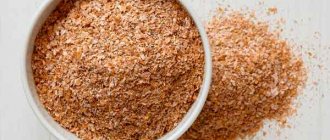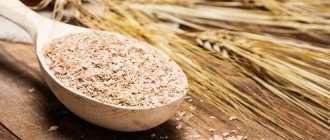Apples are considered a dietary fruit - there are hundreds of diet options where apples are the main component of the menu. The calorie content of an apple, its composition, the ratio of proteins, fats and carbohydrates, indeed, claim the right to be called the most useful for those losing weight. However, not all varieties are suitable for these purposes.
Red and green varieties, “idared” and “semerinka” have fundamentally different “weight” for the waist and the number of calories. What is important to know when planning a diet, how to eat apples correctly, what colors of fruit to choose on a diet - read all the secrets of the fruit in our article.
Beneficial and harmful properties of apples
Apples contain a large number of substances necessary for the body:
- vitamins;
- minerals;
- beta-carotenes;
- antioxidants;
- fiber;
- amino acids.
Pectins contained in apples have bactericidal properties and help improve blood circulation in the gums and reduce bleeding.
A medium-sized apple contains about 15 grams of soluble and insoluble fiber. Soluble fiber helps normalize blood pressure, lowers cholesterol levels, restores intestinal microflora and can effectively combat heartburn and constipation.
Insoluble fiber helps:
- cleanse the liver;
- improve intestinal motility;
- normalize blood sugar levels;
- increase the body's resistance to tumors;
- cleanse the intestinal walls and remove toxins from the body.
Apples contain a large amount of flavonoids, which are actively involved in metabolism and help with skin and joint diseases. Fruits are also rich in fructose and glucose, which increases performance, endurance and improves concentration.
However, consumption of the product should be moderate . If there is an excess of fruit acids and fiber in the body, due to excessive consumption of fruit, there may be an exacerbation of gastritis, colitis and ulcerative processes, the occurrence of an inflammatory process in the gallbladder, as well as thinning of tooth enamel.
It is also necessary to limit the consumption of apple seeds so as not to cause intoxication of the body. The chemicals used to treat apples to ensure longer storage can also cause harm to the body, so fruits must be thoroughly washed before eating.
Indicators of GI, BJU and calorie content of apples
Green apple, which has a low calorie content and low glycemic index, is perfect for everyone, including people with diabetes. The glycemic index (GI) is a measure of the rate at which blood glucose levels rise. Any carbohydrate-containing product is characterized by this indicator.
When consuming foods with low GI, the risk of provoking the development of diabetes mellitus is reduced and has a significant effect on preventing the process of obesity.
Although low in calories, a green apple contains a large amount of carbohydrates (simple and complex). Simple carbohydrates, presented in the form of sucrose, glucose and fructose, are quickly absorbed by the body. They allow you to improve metabolic and metabolic processes in the body, as well as increase brain activity and protect the liver from toxic effects.
Complex carbohydrates normalize the functioning of the digestive system and allow you to quickly remove waste, toxins and free radicals from the body.
The energy value of apples increases in proportion to their size.
For 100 g fresh apples
A green apple has the following calorie content and nutritional value per 100 g:
| Indicator values | % of daily value | |
| Squirrels | 0.78 g | 1 |
| Fats | 0.49 g | 0,6 |
| Carbohydrates | 9.83 g | 3 |
| Calorie content | 46.13 kcal (193 kJ) | 2 |
GI and Kcal in one apple
A medium-sized green apple has a GI of about 30-35 units. The calorie content of an apple depends on the variety and size of the fruit and is 40-60 Kcal. To accurately calculate calorie content, you can use a kitchen scale.
Dried apples
Dried apples have greater energy value. It depends on the variety of apples and ranges from 190 to 260 Kcal per 100 g. The amount of carbohydrates is about 48 Kcal per 100 g.
Calorie content of different varieties in 1 piece and in 100 grams
A lot also depends on the variety - sweet ones are more sugary, nutritious, and with sourness they have freshness, but are safer from the point of view of weight loss.
Fuji
The variety was bred in Japan, where the fruits are simply adored and added almost everywhere - in compotes, desserts, salads. It is considered a winter variety - it is harvested in late autumn. A distinctive feature of the variety is its sweetness and crispy crust. At the same time, they are quite nutritious - there are 70 kcal per 100 g, which is generally high for any fruit.
Golden
The Golden variety is the most popular in America and Europe. There it is valued for its sweetness, honey flavor, and subtle unobtrusive sourness. The variety is used for the production of industrial juices, desserts, and baby food. Although, if you decide to lose weight with Golden, you should be vigilant: there are 53 kcal per 100 g of product. Also, especially sweet varieties of the variety (with dark inclusions) have a high GI, that is, they provoke overeating. So, a large Golden apple fruit weighing 180 g will have a calorie content of 95.4. But in dry form, they are a complete replacement for any sweets, which are good to wash down with teas or low-fat fermented milk products.
Idared
The sour-tasting Idared fruits were brought to Russia from America, where the variety was bred. Unlike Golden, this variety is used for making candied fruits; it is baked, boiled, and dried. When you see the fruits, buy with confidence. They are absolutely safe for the waist, having a value of 40 kcal per 100 g. In America, it is Idared that is prescribed by nutritionists for “weighted people”
Red Delicious
Red Delicious combines sourness and sweetness, and its calories are quite moderate - 45 kcal per 100 g. Red Delicious looks juicy, it is used as a raw material for juices, and syrups and compotes are made from it. But even when eaten fresh, the fruits are an excellent fresh dessert that can be stored for a long time.
Royal Gala
But the Royal Gala variety, bred in New Zealand, is distinguished by its delicate skin, and the pulp has a vanilla flavor. The fruits are also juicy, low in calories - from 50 kcal per 100 g - excellent, suitable for baking with cottage cheese and green smoothies.
Semerenko
Many people consider Semerenko’s apples to be imported. But the variety is the property of our Russian breeders. It was developed by agronomist Lev Simirenko back in the mid-50s of the last century. Apples are loved for their high yield, excellent appearance and are stored without spoilage throughout the cold season in Russia - from November to April.
In dietetics, the fruits are valued for their low calorie content - 37 kcal, low saccharide content, and ability to be quickly absorbed. However, this variety often tastes sour, which is why it is recommended to eat it either dry, baked, or in the form of a smoothie with the addition of slightly sweeter fruits: kiwi, bananas, mangoes. Tasty and healthy fresh juices with pumpkin, carrots, celery - a serving of the drink contains no more than 130 kcal, and it fills you up for a long time.
Seasonal
It’s easy to guess from the name: seasonal apples are those that are ripe in their season. There are varieties that are harvested in early summer, and there are late ones. But it happens that the most inexpensive varieties go on sale and are transported in large quantities at one time. It is quite difficult to calculate the calorie content of such apples - the buyer should pay attention to the color of the skin, the region of growth and, of course, the taste of the pulp itself.
In any case, apples are calculated from 34 to 71 kcal per 100 g of product. Since the fruit weighs on average 200 g, multiply the figure in half and eat with pleasure fresh, dry, baked. But you should abstain from industrial juices on a diet.
Composition of apples
The composition of apples mainly depends on growing conditions, variety, level of maturity, storage conditions, processing and other factors.
A green apple consists of 80% water, which makes the fruit an excellent thirst quencher.
In addition, water contains dissolved organic acids, sugars, minerals and other useful substances.
Apples are rich in macroelements and essential oils, which are natural antibiotics that have a detrimental effect on pathogenic microorganisms. The composition also contains vitamins, saturated and unsaturated fatty acids, and dietary fiber.
Vitamins
Due to the high content of vitamins in their composition, apples are recommended for consumption as a prevention of vitamin deficiency.
The main vitamins contained in fruits and their percentage of the daily value:
- vitamin B1 (thiamine) – 1%;
- vitamin B2 (riboflavin) – 0.6%;
Green apples are very low in calories - vitamin B5 (pantothenic acid) – 2%;
- vitamin B6 (pyridoxine) – 3.2%;
- vitamin B9 (folic acid) – 2.8%;
- vitamin C (ascorbic acid) – 24.3%;
- vitamin E (alpha tocopherol) – 3.6%;
- vitamin PP (nicotinic acid) – 5.5%;
- vitamin K (phylloquinone) – 2.5%;
- lutein and zeaxanthin – 0.5%;
- choline – 0.7%.
Microelements
Green apples are rich in microelements that help vitamins be better absorbed.
Mineral composition and percentage of microelements in 100 g of apples from the daily norm:
| Bor | 350% |
| Vanadium | 12,5% |
| Iron | 10,5% |
| Iodine | 1,4% |
| Cobalt | 10% |
| Manganese | 2,9% |
| Copper | 3,8% |
| Molybdenum | 8,6% |
| Arsenic | 2,5% |
| Nickel | 11,3% |
| Rubidium | 63% |
| Thallium | 2,5% |
| Chromium | 8,0% |
The composition also contains tin, lead, aluminum, lithium, zinc and fluorine in small quantities.
Macronutrients
Green apples contain a significant amount of macroelements that are essential for the body.
Per 100 g of product there are:
- calcium (3-15 mg) is part of bone mass and is involved in muscle relaxation;
- potassium (80-350 mg) helps normalize water and acid-base balance in the body;
- magnesium (3-9 mg) is involved in protein synthesis;
- phosphorus (9-25 mg) is a source of cellular energy and is part of bones;
- chlorine (about 2 mg) is involved in the production of hydrochloric acid in the stomach.
Amino acids and antioxidants
Apples contain a large amount of antioxidants that bind free radicals, thereby preventing many diseases. The more ripe the apple, the more antioxidants it contains.
Polyphenols contained in green apples reduce the likelihood of developing cancer by 50% and reduce the likelihood of damage to blood vessels, and flavonoids prevent cardiovascular diseases, the development of cancer cells and normalize cholesterol levels in the body.
Apples also contain a small amount of amino acids (essential and non-essential), such as lysine, glycine, arginine, methionine and others. Amino acids are involved in protein synthesis in the body and are useful not only for the brain and muscles, but also for beauty and immunity.
Allowed consumption of apples per day for children and adults during pregnancy
Adult men and women are recommended to consume no more than 4 apples per day. If consumption increases beyond the recommended amount, problems with the digestive system, tooth enamel and bladder are possible.
Green apples, which contain significantly less calories and sugar content than yellow and red varieties, are recommended for pregnant women to consume up to 5 pcs. This amount will help maintain the level of vitamins and minerals in the body, eliminating excess weight gain. Due to their high iodine content, you can also eat apple seeds.
It is recommended to give children a few drops of apple juice, starting from six months, gradually increasing the volume to 30 ml. From 1 year to 3 years, the maximum amount of apples, including juices and purees, should not exceed 200 mg. From 3 years old, you can increase the amount of fruit to 300 g per day; after 7 years, the volume can be increased to 500 g. After 14 years, a child needs about 600-800 g of fruit per day.
Contraindications
Despite the benefits of the product for the human body, violation of the rules of use can cause significant harm to health. There are several contraindications:
- gastric ulcer with threat of perforation in the acute stage;
- gastritis with high acidity during exacerbation and taking medications;
- recovery period after surgery on the digestive system;
- inflammatory pathologies of the small or large intestine in the acute stage, for example, enteritis, colitis;
- individual intolerance to the product.
Patients with hyperthyroidism should avoid eating apple seeds, since the iodine they contain can aggravate the pathological condition. People who are losing weight and those who are obese are not recommended to overuse dried and dried fruits due to their high calorie content. Compote and jam made from healthy fruit are also not suitable for them.
Concentrated apple juice from green apples is not recommended for use by patients with any pathologies of the digestive system in the acute stage, as this can cause complications.
When the product is abused, a person often experiences increased gas formation, intestinal spasms, constipation, pain in the stomach and intestines, increased sensitivity of tooth enamel, and bloating.
What diseases are apples good for?
Apples are best eaten fresh in the fall or early winter. During this period, they have the maximum amount of medicinal ingredients and are the most valuable for the body.
Apples are useful for various diseases:
- anemia (saturate the body with iron);
- vitamin deficiency (contain a large amount of vitamins and minerals);
- chronic constipation (fibrous substances improve intestinal motility);
- edema (have a diuretic effect);
- heart and kidney diseases (antioxidants improve the functioning of the cardiovascular system and remove toxins, and also reduce cholesterol levels);
- hypertension and obesity (soluble fiber helps normalize blood pressure, and pectin helps prevent the process of obesity);
- bronchial asthma (with daily use of apples the disease is more easily tolerated);
- cancer prevention (antioxidants contained in the peel prevent cancer cells from developing);
What to look for when purchasing
- When buying apples in the supermarket, pay attention to their appearance. As a rule, to add shine, they are treated with chemicals that are very harmful to the gastrointestinal tract. If you bought these, as an option, peel them or rinse the fruits well with running warm water, and then wipe them thoroughly.
- The beta-carotene contained in the fruits can cause an allergic reaction.
- If you suffer from gastritis, high acidity, ulcers or other diseases of the digestive system, refrain from consuming sour varieties. Fruits of other varieties should be peeled.
- Do not overuse, as excess fiber can cause digestive disorders, colic, and flatulence. The norm is to consume no more than 400 g per day with a normal diet and no more than 1 kg on fasting days.
Use of fruit in folk medicine. Recipes and rules of use
Apples are widely used in folk medicine for the treatment or prevention of many diseases:
- To treat arthritis, you need to take a teaspoon of apple cider vinegar dissolved in a glass of water for 2 weeks, 3-4 times a day.
- For diseases of the thyroid gland, consuming 10 seeds daily will help saturate the body with iodine.
- A mixture of half a glass of honey and 3 tablespoons of apple cider vinegar, taken 2 teaspoons before bed, will help with insomnia.
- For hair loss, you need to consume 2 tablespoons of apple cider vinegar diluted with a glass of water for 2 weeks.
- If you have diabetes, hypertension, urolithiasis or obesity, you should drink a glass of freshly squeezed juice diluted with half a glass of water during the day.
- For various stomach diseases, using 150 g of grated apples 4 hours before meals for a month will help.
- If you have the flu, apples need to be peeled, cut, poured boiling water and left until warm, and taken a glass during the day.
The use of fruit in cosmetology
Apples have tonic and antioxidant properties. Creams and cosmetics that contain them have pronounced anti-aging and regenerative properties. Such creams tone, restore skin elasticity and protect it from harmful environmental factors.
Apples are widely used as face masks, which are ideal for any skin type. Thanks to malic acid, the walls of blood vessels are strengthened, which helps eliminate vascular networks on the face. For oily skin you should choose more sour varieties, for dry skin - sweeter ones.
Due to their high content of vitamin C and amino acids, apples are often included in various peelings. They have a whitening and exfoliating effect. They are also used in anti-cellulite products, helping to tighten the skin and reduce fat deposits.
Apples are also used in shampoos; they cleanse the scalp well, effectively cope with excess sebum and do not disturb the acid-base balance. As part of hair masks, apples work well against dandruff, moisturize the scalp, and add shine to hair.
Can you eat apples if you have diabetes?
Green apples, which are low in calories and have a glycemic index of less than 35 units, are perfect for diabetes. Moreover, when used correctly, they are not able to provoke glycemia.
The vitamin and mineral complexes contained in apples strengthen the blood vessels of the brain, heart and limbs, and these are the ones that primarily suffer from diabetes. Apples contain coarse fiber, which slows down the rate of carbohydrate absorption and prevents sudden changes in blood sugar.
For type 1 diabetes, it is recommended to eat half an apple, divided into 2 doses; for type 2 diabetes, it is recommended to eat 1 apple, divided into 2 doses. In addition, endocrinologists recommend eating baked apples for both types of diabetes.
Table values
The level of carbohydrates when preparing (dried, baked) apples is radically different. After all, during the cooking process additional ingredients are added: honey, cottage cheese, other fruits. Also, this level may vary depending on the specific variety of fruit.
| Apple (100 grams) | Carbohydrates (grams) |
| Red | 10,05 |
| Green | 9 |
| Semerenko | 9 |
| Granny | 14 |
| Golden | 10,7 |
| Idared | 9,7 |
| Smith | 9,2 |
| Dried | 47,7 |
| Baked | 9,2 |
Do apples make you fat?
All varieties of green fruit have an average calorie content of only about 47 kcal, which is why it is a dietary product. Eating 2 apples a day allows you to start the process of burning excess fat. In addition, apples speed up the metabolic process in the body and allow you to quickly remove waste and toxins.
Apples can increase appetite, so it is better to eat them in between main meals. The only option in which you can gain weight is excessive consumption of apples in the form of candied fruits and as part of baked goods.
Features of use
To get only benefits from the product, you must follow several rules. It is recommended to eat fresh fruits that have not undergone heat treatment. To prepare the product for future use during the cold season, it is better to take varieties of winter apple trees that tolerate low temperatures well without losing their beneficial properties. In Russia and Ukraine they are represented by Granny Smith, Semerenko, and Jonathan apples. The Golden variety has good frost resistance.
Those who include the product in their diet should know that they should not eat it at night. Before going to bed, you are allowed to consume only green varieties and in rare cases, so as not to gain weight. Another obstacle to eating fruits at night will be their diuretic effect. People suffering from diarrhea are not recommended to eat apples on an empty stomach, so as not to provoke a worsening of the condition.
It is better to consume fruits in the daytime or in the evening separately from main meals. Taking it after a heavy meal will only lead to rotting in different parts of the digestive tract.
A healthy person is allowed to eat 2-3 medium-sized fruits per day without harm to health. For those who suffer from any ailments, preliminary consultation with a specialist is recommended to determine the advisability of eating apples.
To lose weight and maintain your weight within normal limits, it is recommended to have a fasting day on these fruits once a week. During this day, you are allowed to eat no more than 2 kg of apples, dividing the amount into 5-6 equal portions. You should drink only clean water (2 liters per day). It is better to choose green fruits of medium size and without any external defects. Regular unloading using this method will help you lose weight and improve your health.
Apple based diets
Due to their low calorie content and high content of vitamins, minerals and antioxidants, apples are well suited for diets. Fruits must be consumed with the peel, as it contains the maximum amount of fiber and minerals. This will allow you to effectively establish all metabolic processes in the body and remove waste, toxins and excess fluid.
Apple diets vary in duration, but they are all very effective and beneficial for the body.
The simplest and healthiest is the one-day apple diet. Throughout the day you need to eat about 1.5 kg of fresh or baked apples. In this case, you need to limit the intake of any liquids as much as possible.
A three-day apple diet will not only help you get rid of excess fat deposits, but also remove kidney stones. This diet is based on the use of only freshly squeezed apple juice.
Instead of breakfast, you need to drink 1 glass of juice, and then take 2 glasses of apple juice every 2 hours until 20 hours. On the 3rd day, after drinking the juice, it is recommended to drink another 50-70 g of olive oil, which must be washed down with another glass of juice diluted 1:1 with water.
The apple diet for 7 days allows you to get rid of 7 kg of excess weight. It is more difficult than the previous ones, but also more effective. However, this diet should be used in practice after a comprehensive medical examination and permission from the attending physician.
Diet conditions:
- on the 1st day of the diet it is recommended to consume 1.5 kg of fruit;
- on day 2 you can eat up to 2 kg of apples;
- on the 3rd and 4th days, the amount of fruit should not exceed 2 kg of fruit daily;
- on the 5th and 6th days the amount of fruit is reduced to 1.5 kg daily;
- On the 7th day, only 1 kg of apples is consumed.
Throughout the diet, you can drink water and green tea in unlimited quantities.
How many calories are in dried, baked, boiled and dried apples?
To create a diet, it is important to understand the energy value of fruits cooked in the oven or microwave. When a new crop appears, baked apples are very often made (without anything or using various additives). This cooking method is suitable even for unripe fruits.
But how many calories are in such a dish? An apple baked without other ingredients yields 47 kcal (100 g). But the energy value of baked fruits can increase 1.5-2 times if you use curd mass, raisins, honey, sugar, etc.
Dried fruits are quite high in calories. When water evaporates, the amount of fructose in them increases. It turns out that 100 grams of dry preparations contain 240 units. For the same reason, jerky treats contain a lot of calories. The same amount of product contains 243 kcal.
The energy value of boiled fruit is not high. If you make compote from it, then 1 glass will contain no more than 150 calories. Soaked apples are ideal for losing weight - 100 grams contain about 46 units.
You can learn about the benefits of apples from the video:
How to select and store apples
You can choose the right apples without testing if you know the characteristics of a certain variety. You should choose medium-sized fruits, because fruits that are too large may indicate the addition of special substances during their cultivation and contain a large amount of nitrates.
When buying apples, you should follow several rules:
- It is advisable to purchase fruits from your region, because they are less processed with chemicals for long-term storage;
- You should choose apples without damage or dents from falls;
- The apple peel should be hard and clean;
- give preference to fruits that are not heavily waxed.
Apples should be stored in a cool, dark place. For better storage, strong, ripe fruits without damage are selected. It is best to put them in a box made of cardboard or wood, first wrapped in paper. For longer storage, you can sprinkle the apples with dry sawdust.
You can also store apples in special holes in the ground, about 50 cm deep, in summer cottages. Fruits should be placed in plastic bags and sealed tightly, and spruce or pine branches should be placed at the bottom of the hole. You should know that summer varieties of apples are stored for about a month, and winter apples can last 3-4 months.
Green apples have a unique vitamin and mineral composition, are hypoallergenic, low in calories and have a glycemic index. This makes them an indispensable product in the diet.











